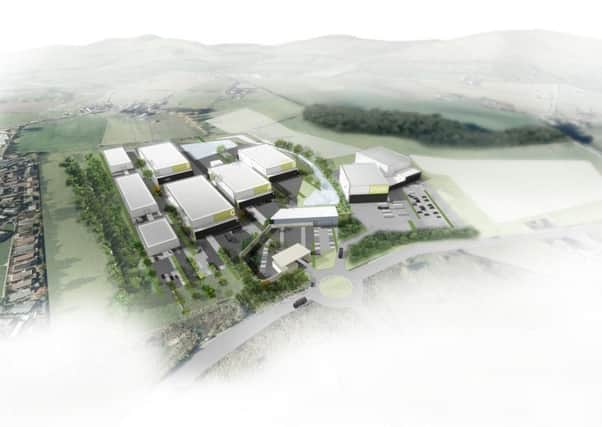Brian Ferguson: Doubts over studio linger despite green light


At times it has felt as if the lack of a studio was generating more publicity than the entire output of Scotland’s film and television industry.
I was almost blinking in disbelief last week when I read that the Scottish Government had finally approved the country’s first purpose-built studio. The go-ahead for Pentland Studios in Midlothian may only be “in principle” but it certainly felt like a bit of a moment for anyone with half an interest in the business.
Advertisement
Hide AdSenior figures in the government agencies responsible for the sector, Scottish Enterprise and Creative Scotland, have spent years squirming in the spotlight as demands for a studio have grown louder.
The fact is high-profile films such as Filth, Sunshine On Leith and Under The Skin were only partially made in Scotland due to the lack of studio space.
The use of warehouses for fantasy drama Outlander in Lanarkshire, Trainspotting sequel T2 in West Lothian and the Avengers blockbuster in Leith have highlighted the country’s drawbacks. All of the above could have been worth so much more had proper facilities been in place.
Campaigners have also looked on with dismay as new facilities have been approved and developed across the UK and Ireland.
As frustration has mounted, Scottish culture secretary Fiona Hyslop and First Minister Nicola Sturgeon were being increasingly harangued on social media by activists.
In any respects, the green light seems like a no-brainer. So why are there so many lingering doubts? Many of these are down to the way the project has been pursued and promoted.
Advertisement
Hide AdWhile the project has not exactly been shrouded in mystery, its backers have remained in the shadows. They have appeared content to leave the campaigning to the Association of Film and Television Practitioners Scotland.
The developers appear to have had little interest in dealing with Scottish Enterprise or Creative Scotland, and their project could not win support from the government’s own “studio delivery group”.
Advertisement
Hide AdThe developers also decided to bypass Midlothian Council when it became clear its planners were against the project. Going straight to the government in the hope of a swift decision backfired due to the complexities of the site and the opposition from environmental campaigners and Green MSPs.
When it came to the crunch, the government’s own reporter could not have been more critical in calling for a refusal. Normally, this would be the death knell for a contentious planning application. It was left to SNP ministers to pull the studio out of the fire.
Giving the go-ahead is undoubtedly a signal from the government that it is finally throwing its weight behind the screen sector. But it will have to live with the consequences if the studio is not delivered as promised. And although it has no financial involvement with the scheme, it desperately needs it to succeed.
There are also many industry doubters who privately express surprise that the studio has been approved and wonder how viable it will be, given it will be so far from the industry hub in Glasgow. But with the tight timetable set by the developers to be up and running next year, there will not be long to wait for the next chapter of this saga to unfold.